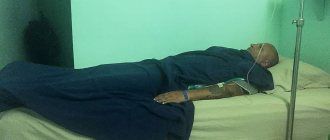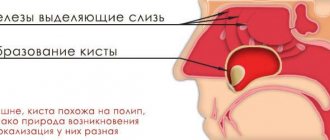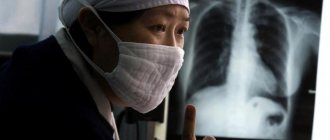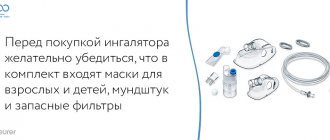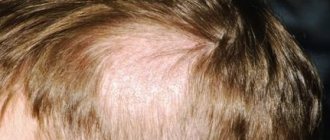Diaskintest is a skin test to determine the presence of tuberculosis and characteristics of the development of the pathological process. Using the test, the active form of the disease in all organs is established, asymptomatic carriage, in which the patient is a carrier of mycobacteria.
Among the advantages of the test are:
- High level of security;
- Does not cause a reaction in healthy and vaccinated people;
- Highly sensitive. All sick and infected persons have an accurate positive result;
- Allows you to determine the activity of the disease and monitor the effectiveness of treatment;
- Shows a negative result after proper therapy.
Why do you need to get the DST vaccine?
The causative agent of the disease is Mycobacterium tuberculosis. Develops against a background of decreased immunity, malnutrition, frequent hypothermia, malnutrition, HIV infection, drug addiction, and nervous hypothermia. Transmitted in several ways:
- Airborne: through communication, sneezing, contact with a patient;
- Household: when using dishes, things, kissing, etc.;
- Through contact with the carrier;
- Food: eating affected food;
- Intrauterine: from mother to child.
In the acute form of tuberculosis, a prolonged and wet cough with sputum production is observed; hyperthermia. The patient sharply loses weight, complains of fatigue, and a general deterioration in health. Performance is lost.
The cough is wet and pronounced. Occurs in the form of frequent attacks, especially in the morning. Often the disease at the initial stage is mistakenly confused with “smoker’s cough”, symptoms of chronic bronchitis.
According to statistics in the CIS countries, approximately 90% of people are carriers of Koch's bacillus. In this case, 5% get sick. The development of tuberculosis depends on the level of immunity. Therefore, the main method of preventing the disease is maintaining a healthy lifestyle. Children are required to be vaccinated; regular samples and tests are carried out, with the help of which it is possible to establish in the early stages. Diaskintest is a solution that helps identify the disease in the early stages.
Expert opinion
Author:
Alexander Vyacheslavovich Averyanov
Pulmonologist, Doctor of Medical Sciences, Professor, doctor of the highest qualification category
According to statistics, 90% of the population are carriers of the Koch bacillus, the causative agent of tuberculosis. However, the incidence is recorded in only 5%. The disease develops against the background of immunodeficiency, so it is important to lead a healthy lifestyle and engage in prevention.
Diaskintest allows you to diagnose tuberculosis. The method differs from the classical Mantoux in its accuracy. The effectiveness of Diaskintest is 90%. For comparison, Mantoux's accuracy ranges from 50 to 70%. The Yusupov Hospital uses Diaskintest to diagnose tuberculosis. The method is also effective for preventive purposes. Results are assessed after 72 hours. Diaskintest is well tolerated and rarely causes allergic reactions. Even if individual intolerance to a component of the test occurs, undesirable reactions disappear after 2–3 days.
Diaskintest has proven itself on the positive side with most domestic doctors. Diagnostics is being actively introduced into medical institutions. High efficiency allows you to prescribe correct treatment. This is important, since tuberculosis is characterized by a progressive course and high mortality without adequate therapy.
A little about tuberculosis
Tuberculosis has been and remains a dangerous infectious disease. Koch's bacillus, or Mycobacterium tuberculosis, the causative agent of the disease, is so aggressive and resistant to the external environment that it can remain viable for several months in dry sputum, on various surfaces.
Mycobacterium is easily transmitted by airborne droplets (coughing, sneezing) and through household contact. Penetrating into the body, the microbe affects various organ systems, but most often these are the chest organs. However, not in all cases tuberculosis is active - approximately a third of the planet’s inhabitants are “owners” of a latent form of the disease, that is, the microbe is present in their body, but the immune system successfully copes with it. Such people do not suffer from tuberculosis (the possibility of activation of the pathology is no more than 10%) and do not pose a danger to others. If the immune system is weakened (HIV, diabetes, chronic disorders, poor nutrition, stress, and so on), the likelihood of developing the disease increases sharply.
ON A NOTE! According to statistics, the incidence of tuberculosis in Russia has decreased in recent years. However, many experts are skeptical about such data, rightly believing that not all cases of infection and mortality were taken into account. Since the times of the USSR, there has been an opinion that only socially disadvantaged people can get tuberculosis. In fact, mycobacterium does not select a person by status. In addition, this attitude towards the disease leads to a situation where “prosperous” people, having fallen ill, try to hide this fact from others, including doctors and relatives.
Another reason for the lack of statistical recording is the stereotype associated with the symptoms of tuberculosis. It is believed that the patient must certainly choke from coughing, spit phlegm with blood, and so on. But such symptoms indicate an already advanced stage, when the disease is difficult to treat. And at the early stage of infection, a person may only feel fatigue, loss of strength, a slight increase in temperature in the evening and other signs that easily fall into the category of “you just need to rest.” As a result, there is no need to see a doctor, tuberculosis progresses and spreads.
Treatment of the disease is long-term and requires taking medications from different groups for several months. In the absence of timely and adequate therapy, the result is death. In addition, tuberculosis is dangerous due to its complications on the brain, bone tissue and others.
How the analysis works
Diaskintest is used to perform an intradermal test in all age groups for the purpose of:
- Determination of the phase of development of tuberculosis;
- Identification of individuals at high risk of developing the open form;
- Diagnosing the form of the disease;
- Treatment activity assessments, etc.
A test through the Diaskintest test is carried out in the following cases:
- Persons who have received a referral to an anti-tuberculosis institution for examination for the development of the tuberculosis process;
- Persons at high risk, taking into account epidemiological, medical and social factors.
One dose of the drug contains recombinant protein CFP10-ESAT6 - 0.2 μg, sodium phosphate. Existing synthetic antigens, after being introduced under the skin, cause an allergic reaction. This form of manifestation indicates the presence of an active phase in which tuberculosis develops or infection occurs without the formation of pathology. Additional components: sodium chloride, potassium phosphate, polysorbate 80, phenol.
Possible side effects
For most, the test process is asymptomatic.
Headaches, general weakness, sleep disturbances, and increased body temperature may occur. Individuals with altered reactivity experience allergic reactions. Considering the possibility of developing immediate allergic reactions (anaphylactic shock, Quincke's edema, urticaria) in particularly sensitive individuals, vaccinated persons must be provided with medical supervision for 30 minutes.
Come get vaccinated at MAMARADA. A full range of vaccines for children and adults, family vaccinations - at a special price!
Difference from Mantoux?
The main difference between Diaskintest and the classic Mantoux is the accuracy of the data. When performing Mantoux, the accuracy of the result ranges from 50 to 70%. Tests have shown that the intradermal test is 90% accurate.
In addition, each test has a different composition, which contains different active ingredients. In Mantoux, the main active element is tuberculin, contained in tuberculosis bacteria. However, this protein is present not only in tuberculosis, but also in microorganisms similar to the disease. Diaskintest contains as its main element a protein that is found only in this disease. Therefore, the reaction to the tests is different. With a positive Mantoux test, there is a high risk of the presence of bacteria that are not the causative agents of tuberculosis.
If you receive a positive result after Diaskintest, you can be completely sure of infection with tuberculosis, which means you can apply the correct treatment in a timely manner.
Thus, the method shows more accurate results in detecting a dangerous disease, applying treatment to avoid serious complications. examination practice shows that Diaskintest is effective at any, even the earliest stages of tuberculosis
Indications and contraindications for the test
It is used for conducting intradermal testing of people of different age groups, as well as for assessing the activity of the infectious process. Using the test, it is possible to identify individuals belonging to a group at high risk of infection and developing the active phase.
It is used for the differential diagnosis of tuberculosis, as well as in the fight against infectious and post-vaccination allergies. Often prescribed by doctors to confirm the quality of treatment.
Diaskintest does not cause a delayed-type hypersensitivity reaction, which often occurs during BCG vaccination.
Along with the indication, there are a number of cases in which it is not recommended to conduct a test to detect tuberculosis. These include:
- The presence of acute and chronic infectious diseases. The exception is suspected tuberculosis;
- Exacerbation of somatic diseases;
- Spread of skin infection;
- Allergic reaction;
- Epilepsy.
In children's institutions, where quarantine is often established, the test is carried out after it is lifted. Sometimes when used, a number of side effects occur, which manifests itself in the form of malaise, headache, and increased body temperature. Do not use together with preventive vaccinations. It is carried out after their completion, at the end of the 30 day period.
HOW HIGH PRECISION OF DIASKINTEST IS ACHIEVED
Diaskintest is a diagnostic test based on the formation of a delayed-type hypersensitivity reaction (DHT), manifested in the form of a compaction (papule) at the injection site in the presence in the body of mycobacterium tuberculosis, pathogenic for the human body, with the presence in its structure of two antigens ESAT-6 and CFP-10 . These antigens are not found in vaccine mycobacteria (BCG) and non-tuberculosis bacteria.
If a person is sick with tuberculosis (active or latent (latent) tuberculosis infection), then a compaction (papule) forms at the injection site of Diaskintest - a positive test. In this case, a thorough further examination is necessary to exclude active tuberculosis. In the absence of reliable signs of the disease, a positive test indicates that the person has a latent (latent) tuberculosis infection and there is a high risk of the disease becoming active in the near future. Therefore, special preventive treatment with anti-tuberculosis drugs is necessary.
If a person is healthy and has immunity from tuberculosis after vaccination with BCG (post-vaccination immunity), then the Diaskintest will be negative.
To assess the effectiveness of any test sample, two main characteristics are taken into account: sensitivity and specificity. The higher these indicators, the better the test detects infection.
The sensitivity of the test is the presence of positive reactions in individuals with a reliably confirmed diagnosis.
The sensitivity of Diaskintest is 96.0%6.
The specificity of the test is a negative reaction to the test in absolutely healthy people.
The specificity of Diaskintest is 99.0%6.
All this allowed Diaskintest to become a reliable and highly informative method for diagnosing both latent and active tuberculosis. High diagnostic accuracy allows you to avoid unnecessary and often harmful treatment courses and studies.
How is DST made?
Diaskintest vaccination is carried out only as prescribed by a doctor for children and adults only by a medical worker with permission to carry out intradermal tests.
Diaskintest is administered strictly intradermally. For this purpose, special tuberculin syringes and thin short needles are used. Before using the drug, be sure to check the date and expiration date. After opening, the bottle with the drug is stored for no more than two hours.
How many times is Diaskintest done per year? Healthy children aged 8 to 18 years are prescribed once a year during a mass examination. In the absence of BCG vaccination, it must be done twice a year. For adults, it is prescribed once every 12 months for preventive purposes.
In the presence of diabetes mellitus, lung diseases, peptic ulcers of the stomach, lungs and kidneys, adults and children are treated twice a year at intervals of six months. It is allowed to test if the Mantoux test is positive.
In all other cases, the procedure is prescribed only as prescribed by a doctor. The following rules apply:
- If a negative result is obtained, repeated testing is scheduled after two months;
- If there is a positive answer, it is entered at any time after any period of time as necessary;
- With vaccination or transmission of infectious diseases - no earlier than a month.
Diaskintest - an alternative to Mantoux
22.Mar.2019
Tuberculosis is an infectious, specific, chronic disease caused by Mycobacterium tuberculosis complex.
The natural reservoir of mycobacterium tuberculosis is humans, domestic and wild animals, and birds. The main mechanism of infection transmission is aerogenic (airborne). However, other routes of infection are possible: contact, nutritional, and most rarely vertical (from mother to child). Tuberculosis in children most often develops during primary infection with Mycobacterium tuberculosis (MBT). Of particular importance when children are infected with MTB is direct long-term contact with relatives with tuberculosis (parents, grandparents, aunts, uncles, etc.).
Tuberculosis (TB) is one of the most widespread infections in the world. According to the World Health Organization (WHO), a third of the world's population is infected with Mycobacterium tuberculosis. Every year about 9 million people fall ill with tuberculosis, and 1.5-2 million people die from tuberculosis.
TB is one of the three leading causes of death in women aged 15 to 44 years. In 2014, approximately 1,000,000 children became ill with tuberculosis, and 140,000 children died from tuberculosis.
In the Russian Federation, the share of children is about 5.0% of all cases of tuberculosis.
Options for the development of the situation after the penetration of the tuberculosis pathogen into the human body are as follows:
- complete elimination (removal) of MBT from the body;
- development of primary tuberculosis (with rapid growth and reproduction of the office)
- infection or “latent infection” (with the persistence of the office, which is in a dormant or “dormant” state), which can either remain so throughout life, or develop into a clinically manifested disease (with intensive reproduction of the office, ineffective immunity, etc.).
From the moment mycobacteria are introduced into the body, during the first year the disease develops in 5% of infected people; during the rest of their lives, tuberculosis develops in another 5%, i.e. The lifetime risk of tuberculosis among those infected is 10%. The presence of various factors may increase the risk of developing local tuberculosis. Thus, in the presence of HIV infection, the annual risk of developing tuberculosis due to LTBI is 10%, and the lifetime risk is 50%.
Risk factors for tuberculosis: contact with people with tuberculosis - close family, close apartment, industrial (at work, school), accidental, contact with animals with tuberculosis, lack of vaccination against tuberculosis (BCG, BCG-M), concomitant chronic diseases - urinary tract infections, chronic bronchitis, chronic purulent-inflammatory diseases of the respiratory system, diabetes mellitus, anemia, psychoneurological pathology, diseases requiring long-term cytostatic, immunosuppressive (including genetically engineered biological drugs) therapy (more than one month), primary and secondary, HIV infection, frequently ill children, young age (from 0 to 3 years), prepubertal and adolescent age (from 13 to 17 years), alcoholism of parents, drug addiction in parents, stay of parents in prison, unemployment of parents, homelessness children and adolescents, children ending up in orphanages, orphanages, social centers, etc., deprivation of parents of parental rights, migrants, refugees, etc.
Clinical manifestations:
A. Symptoms of inflammatory disease of the respiratory system (respiratory symptoms):
• prolonged cough (more than 2-3 weeks) with sputum production;
• chest pain;
B. Intoxication symptoms (more than 2-3 weeks):
• increased body temperature, often to low-grade levels;
• weakness;
• increased sweating, especially night sweats;
• weight loss (more than 10% of ideal), etc.
If at least one symptom is present, an examination is recommended to completely exclude suspicion of tuberculosis.
The absence of clinical symptoms does not exclude the disease.
In more than 50% of cases, tuberculosis in children is asymptomatic, therefore the main method for detecting tuberculosis infection (tuberculosis) in children is tuberculin diagnostics (immunodiagnostics), based on identifying delayed-type hypersensitivity in response to the presence of mycobacteria in the body.
Preventive medical examinations of the population are aimed at the timely detection of tuberculosis and are carried out in medical institutions at the place of residence, work, service, and study.
Conventionally, mass and individual immunodiagnostics are distinguished. Objectives of mass immunodiagnostics (screening for tuberculosis): detection of infection with Mycobacterium tuberculosis; selection of persons for vaccination and revaccination against tuberculosis; formation of risk groups for tuberculosis.
Objectives of individual immunodiagnostics: differential diagnosis of post-vaccination immunity (BCG) and true infection with Mycobacterium tuberculosis; differential diagnosis of tuberculosis and other diseases.
In the Russian Federation, it is recommended to conduct mass examination (screening) of the child population for tuberculosis infection (including when children enter educational organizations - in accordance with paragraphs 1, 2, part 2, article 23 of the Federal Law of December 29, 2012 No. 273-FZ “On education in the Russian Federation”). The examination is carried out annually by the method of immunodiagnostics at the age of 1 year - 17 years inclusive and by the method of fluorographic examination at the age of 15-17 years. In groups at high risk of tuberculosis, screening is recommended twice a year.
A necessary precondition for medical intervention (including intradermal administration of drugs) is the giving of informed voluntary consent of a minor or his legal representative to medical intervention (Article 20 of the Federal Law of November 21, 2011 No. 323-FZ “On the fundamentals of protecting the health of citizens in the Russian Federation”). Federation").
Immunodiagnosis of tuberculosis is carried out using an intradermal Mantoux test with 2 TE PPD and an intradermal test with the recombinant tuberculosis allergen (ATR or Diaskintest), developed in Russia in 2008, which is a complex of recombinant proteins CFP-10 and ESAT-6, intended for intradermal administration. The intradermal test with ATP has the highest sensitivity (98-100%); the highest specificity (90-100%); lack of development of a positive reaction associated with BCG vaccination; minimal frequency of manifestations of nonspecific allergies. The technique for performing an intradermal test with ATP is identical to performing the Mantoux test.
Immunodiagnosis is carried out for children vaccinated against tuberculosis from 12 months of age until they reach the age of 18 years. An intradermal allergy test with tuberculin (Mantoux test) is performed once a year, regardless of the results of previous tests up to and including 7 years of age. An intradermal allergy test with ATP is performed once a year, regardless of the results of previous tests from 8 years of age to 17 years of age inclusive. For those not vaccinated against tuberculosis, a Mantoux test is performed 2 times a year, starting from the age of 6 months.
Children from high-risk groups for tuberculosis who are not subject to dispensary registration by a phthisiatrician, patients with diabetes mellitus, peptic ulcer disease; patients with chronic nonspecific purulent-inflammatory diseases of the bronchopulmonary system and kidneys; patients with HIV infection; patients receiving immunosuppressive therapy for a long time (cytostatics, corticosteroids, genetically engineered biological drugs (GEBP), etc.), an ATP test is carried out 2 times a year in medical organizations of the general medical network. If necessary, perform a Mantoux test with 2 TE PPD-L. Simultaneous testing on different hands is allowed.
It is not recommended to carry out only a test with the recombinant tuberculosis allergen (without the Mantoux test) for children under the age of 7 years inclusive. The Mantoux test is necessary to select individuals for BCG revaccination (6-7 years old)
Based on the results of immunodiagnostics, for further examination in order to exclude tuberculosis and diagnose latent tuberculosis infection, children are referred to a phthisiatrician for consultation within 6 days from the date of the Mantoux test.
If a child is referred to a TB specialist, it is recommended to conduct a fluorographic examination of the child’s environment if more than 6 months have passed since the last examination.
Children referred to a TB specialist are recommended to undergo additional examination methods: general blood and urine tests, radiation examination methods
A positive result for an ATP test suggests the presence in the patient’s body of a population of actively metabolizing MBT, which can lead to disease. In this regard, it is recommended for all patients with positive results for the ATP test to have a computed tomography (CT) scan of the chest organs to confirm or exclude tuberculosis of the respiratory system (intrathoracic lymph nodes, lungs).
A refusal to examine a child for tuberculosis infection must be formalized in writing by the child’s legal representative and filed with the child’s medical documentation (form No. 112/u, 026/u-2000 (Clause 7, Article 20 of the Federal Law of November 21, 2011 “ On the fundamentals of protecting the health of citizens in the Russian Federation "No. 323-FZ). If a citizen, one of the parents or another legal representative refuses medical intervention, the possible consequences of such refusal must be explained in a form accessible to him (clause 4 of Article 20 of the Federal Law dated November 21, 2011 “On the fundamentals of protecting the health of citizens in the Russian Federation" No. 323-FZ). If the legal representative refuses to formalize a written refusal, a corresponding entry is made in the child’s medical records and sealed with the signatures of two medical workers with a transcript. Each legal representative who refused conducting intradermal tests for tuberculosis infection, it is mandatory to be invited to a meeting of the medical commission of a medical organization (Order of the Ministry of Health and Social Development of Russia dated May 5, 2012 No. 502n “On approval of the procedure for the creation and activities of a medical commission of a medical organization”). At the same time, additional information is provided about the recommended medical intervention and the consequences of refusing it. The reasons for the refusal are being clarified.
If the parents (legal representatives) of the child refuse intradermal tests (Mantoux, ATP), it is possible to prescribe alternative examination methods in order to exclude tuberculosis in the child.
Alternative methods for testing for tuberculosis infection include in vitro diagnostic tests. There are currently two commercial diagnostic tests based on this technology. One of them is QuantiFERON®-TB Gold, the other test is T-SPOT.TB (registered in Russia). A negative result of in vitro tests (T-SPOT.TB) in the absence of clinical symptoms of the disease (respiratory and intoxicating nature, other local pathological manifestations) allows the TB doctor to issue a certificate stating that the child does not currently have active tuberculosis.
If you refuse immunodiagnostics (any other method that allows you to exclude tuberculosis), the TB doctor determines the possibility of issuing a certificate or medical report about the absence of an active form of tuberculosis. Deciding on the admission of a child to an educational organization is not within the competence of a TB doctor.
The grounds for a TB doctor to issue a certificate or medical report are:
— results of screening examination for tuberculosis;
— results of alternative examination methods;
- results of a fluorographic examination of the child’s environment no more than 6 months old;
— data from radiation methods for examining the chest organs;
— data on contact with tuberculosis patients;
- the absence or presence of complaints or symptoms in the child that are suspicious of tuberculosis.
Carrying out preventive chemotherapy for LTBI reduces the risk of developing tuberculosis in the future by 5-7 times.
Indications for preventive chemotherapy:
• positive reactions to recombinant tuberculosis allergen;
• positive reactions to in vitro tests;
· presence of contact with tuberculosis patients;
· high risk of developing tuberculosis (HIV infection, treatment with drugs that cause immunosuppression, etc.).
In order to prevent tuberculosis in children, it is recommended to carry out a set of measures to help prevent MBT infection and the emergence of new cases of tuberculosis. The most effective measure is to prevent contact with a patient with an active form of tuberculosis, as well as vaccination against tuberculosis in accordance with the National Preventive Vaccination Calendar. Anti-tuberculosis vaccination prevents severe common forms of the disease in children, reducing the risk of death.
Artanova Marina Vladimirovna, phthisiatrician of the Khanty-Mansi Autonomous Okrug-Yugra “Nyagan City Children's Clinic”
Evaluation of Diaskintest results
After Diaskintest, the test results are assessed by a nurse 72 hours after the vaccine is administered. Measurement of the transverse size of hyperemia and infiltrate using a ruler in millimeters is taken into account. Hyperemia is taken into account only in the absence of infiltration.
The response to the sample is perceived in the following cases:
- Negative Diaskintest score. Complete absence of infiltration and hyperemia, as well as with a “puncture reaction” of up to 2 mm;
- Doubtful. Hyperemia without infiltration was detected;
- Positive. An infiltrate of any size was detected.
The detected positive reaction varies in degree of manifestation:
- Weak. The size is up to 5 mm;
- Moderate. Infiltrate no more than 14 mm;
- Hyperergic Diaskintest results. A volume of more than 15 mm is observed. Also when vesiculonecrotic changes, lymphangitis, lymphadenitis are detected.
If the result is negative, there is practically no swelling. A mark from the injection, a hematoma, may be noticeable. The presence of a bruise makes assessment difficult because there is virtually no redness visible. In controversial cases, a repeat test is scheduled after two months.
If a positive Diaskintest interpretation is detected, an examination for the presence of tuberculosis is prescribed. Accompanied by a strong inflammatory reaction. Allergies and other reactions to the administration of the drug are observed immediately and disappear after 48-72 hours.
Diaskintest interpretation of results may be negative in a patient with tuberculosis due to immunopathological disorders in the body caused by tuberculosis disorders of the body. Also in the early stages of the tuberculosis process, in the presence of concomitant diseases accompanied by an immunodeficiency state.
Why is Diaskintest performed?
Infection of a healthy person can occur at any time: our country is one of the countries with an unfavorable epidemiological situation for tuberculosis, and there is an increase in forms resistant to pharmacotherapy. For a long time, tuberculosis is asymptomatic. The active form is difficult to treat, so treatment is lengthy and can drag on for years. If the disease is diagnosed in a latent stage using allergen tests, then the effectiveness of therapy and cure are guaranteed.
Reasons for a questionable and hyperergic reaction to the test
The response to the test can be positive, hyperergic and doubtful. Such processes indicate the absence of the disease and its pathogens in the body. The explanation for this is as follows:
- The reaction to Diaskintest occurred due to an infection in the body that did not cause corresponding symptoms. Other pathologies that contribute to the body’s reaction. Sometimes symptoms occur due to recent infection;
- Infection of the venue. This is especially true for children;
- Having an allergy with an inadequate reaction to an allergen;
- Somatic and autoimmune diseases.
There may be other reasons for such a reaction to the test. People predisposed to allergies are often given antihistamines before the test.
To avoid a false positive reaction, it is necessary to strictly adhere to contraindications. Adults are prohibited from drinking alcohol before and after the administration of Diaskintest. The breakdown products of ethyl alcohol with the reaction of the drug can cause redness of the injection site, which will be perceived as a positive Diaskintest reaction.
It is not recommended to wet the sample site, public baths, saunas, beaches or swimming pools. Such measures may cause a backlash.
Diaskintest - what not to do so as not to “smear” the result
In order for the Diaskintest assessment to be objective, you should follow the rules of caution after the injection. Despite its low sensitivity to liquid ingress, it is still not recommended to wet the injection site. Otherwise, the reaction may be false positive.
In addition, you should not scratch the injection site to avoid causing swelling and redness. Do not rub or cover with a band-aid, which parents sometimes do when bathing a child, to prevent water from getting into the wound. Since the drug is injected under the skin on your arm, it is best to keep the pen away from the water while bathing in the shower. Covering with a band-aid and trying to thoroughly wipe the papule dry can lead to an unpleasant reaction. These rules must be followed until the sample is “read” by a specialist for three days.
Diaskintest is also carried out for adults, but strictly according to indications. It is done only in tuberculosis dispensaries. And they are used directly to diagnose tuberculosis or evaluate the effectiveness of treatment previously prescribed by a doctor. The method for assessing the result is the same as the rules for preparing for the test and recommendations after it.
Photos of results
You can independently determine the test result without waiting for an examination by a nurse using a photo with the results of the test.
Diaskintest photo performed on a child has a positive result. The size of the infiltrate is more than 5 mm.
With a comparative result, the infiltrate size is 2-4 mm.
The photo provided indicates a negative result. With it, there may be a trace of the injection, the infiltrate is completely absent.
DST test at Yusupov Hospital
Where can I do Diaskintest? This test is carried out in public and private tuberculosis dispensaries. It is carried out strictly once or twice a year in accordance with the doctor’s prescription. Children are administered in kindergartens and schools in accordance with the vaccination plan.
The average price for Diaskintest in Moscow is 1,400 rubles. carried out after visiting a phthisiatrician or pediatrician.
Where to do it in Moscow? This service is available at the Yusupov Hospital clinic. Conducted by professionals. Clients are given the opportunity to undergo a preliminary consultation, and, upon receiving a positive result, undergo a course of therapy with additional techniques for a speedy recovery. Diaskintest can be done at an inexpensive price.

